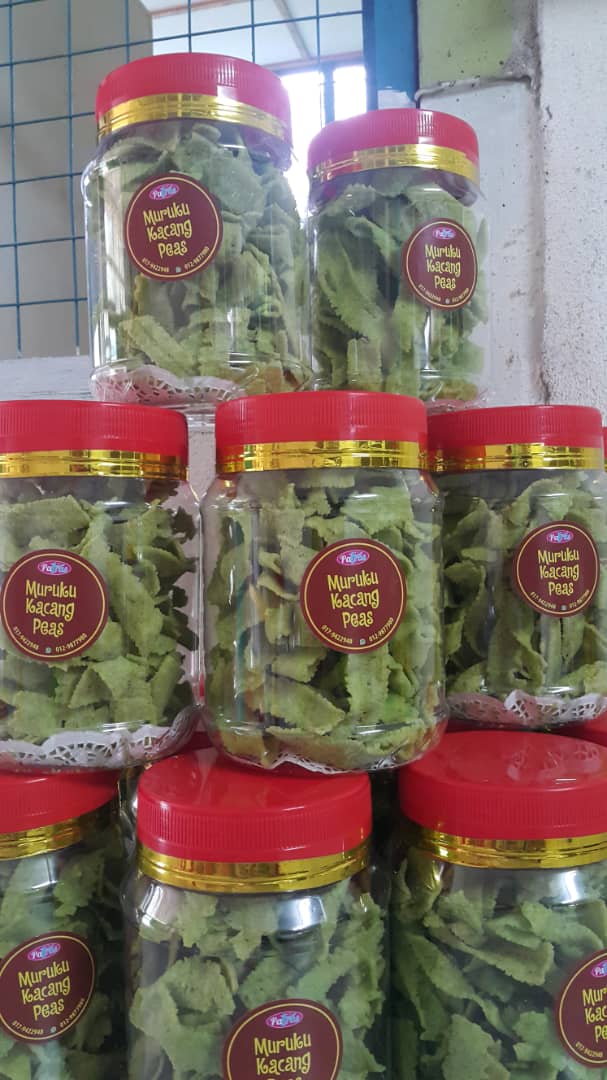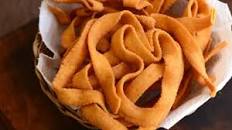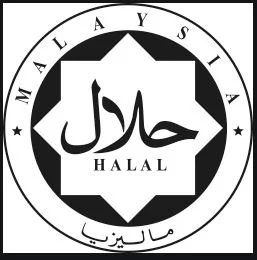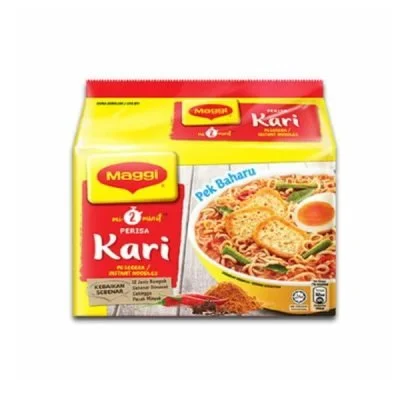No products in the cart.
Join Our WhatsApp Community and Enjoy Exclusive Benefits!
Click Here
Join Our WhatsApp Community and Enjoy Exclusive Benefits!
Click Here
Join Our WhatsApp Community and Enjoy Exclusive Benefits!
Click Here
PATRAS DELIGHTFUL & CRUNCHY MURUKU KACANG PEAS (GREEN PEAS MURUKU) by Nasir Patras Enterprise (Pack of 2) - MY Delivery
£4.80
8 people are viewing this product right now
250gm per bottle
Murukku is a savoury, crunchy snack popular among young and old. Its origin dates back to India but now it is made and enjoyed by people all over the world. The snack derives its name from the Tamil word “twisted”, which refers to its shape. Murukku is typically made from rice flour and urad dal flour but with current trends, new variations have been added to make it yummier, crispier and tastier.
Nasir Patra’s murukku is no exception. Made with a mixture of glutinous rice flour and green peas flour, a crunchy and brittle murukku is obtained. Together with the other ingredients, it gives you a sheer delight in crunching it. Once you start, it becomes so addictive. If you start with one, your fingers will do the walking for the second. Go on!! Grab one now.
Ingredients
Glutinous rice flour, Green Peas flour, salt, sugar, coconut milk, eggs, margarine, water and oil.
Pack of 2 – 250gm per bottle
A Youtube video on how muruku is made
Malaysia & Crunchy Murukku
Malaysia is well known for diversity in its culinary traditions. What people eat provides for significant group boundary markers. Since foods are eaten or avoided to signify ethnic origin, religious orientation, and caste status, as well as to mark the celebration of a religious festival or observance of a rite of passage. Culinary tradition also dictates the context or situation in which specific foods are eaten. The consumption of crispy foods is an example in Southern Indian cuisine, particularly Tamil foods.
Crunchy murukku, It’s considered as convenience foods, which possess a crispy texture, also perceived to be peripheral in a meal. Therefore, are always augmented with more substantive foods. The availability of crispy foods recognised as food items common to the other ethnic groups in multi-ethnic Malaysia also proves this same point; they are always seen to be peripheral.
The trick to getting the murukku crunchy is to finish off the dough with a tablespoon of butter. This custom of making this variety of murukku is still alive in the Brahmin community of Malaysia. Aside from weddings in which the numbers of kai murukku presented will depend on the number requested by the groom’s family (usually it is in odd numbers of 11, 51, or 101), these savoury snacks are also prepared for the festival of Krishna Jeyanthi.
Crunchy Murukku: Though it is a fried snack making it in ghee is healthy for you. As it is prepared from rice flour, gram flour, wheat flour and a mixture of lentil flours, eating it in moderation as a snack is not a bad option.
Read more on multi-ethnic of Malaysia by clicking here.
If Murukku is not what you’re looking for click here to discover whole new Malaysian products.
| Weight | 0.5 kg |
|---|
Be the first to review “PATRAS DELIGHTFUL & CRUNCHY MURUKU KACANG PEAS (GREEN PEAS MURUKU) by Nasir Patras Enterprise (Pack of 2) - MY Delivery” Cancel reply
This site uses Akismet to reduce spam. Learn how your comment data is processed.
Related products
People also bought
Our Services

Authentic Malaysian Products
Select from over 700 Halal & Muslim Malaysian Products.
Secure Payment
Safe & Secure Payment
Support 24/7
Whatsapp 24 Hours Day
SPECIAL PRODUCT
Smoked Beef in Spicy Turmeric Curry (180gm) By Lambaian Rizqi Resources - UK Delivery
Rated 0 out of 5
0 Days
0 Hours
0 Minutes
0 Seconds



















Reviews
There are no reviews yet.